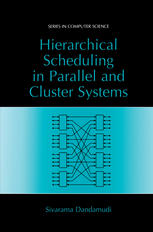

Most ebook files are in PDF format, so you can easily read them using various software such as Foxit Reader or directly on the Google Chrome browser.
Some ebook files are released by publishers in other formats such as .awz, .mobi, .epub, .fb2, etc. You may need to install specific software to read these formats on mobile/PC, such as Calibre.
Please read the tutorial at this link: https://ebookbell.com/faq
We offer FREE conversion to the popular formats you request; however, this may take some time. Therefore, right after payment, please email us, and we will try to provide the service as quickly as possible.
For some exceptional file formats or broken links (if any), please refrain from opening any disputes. Instead, email us first, and we will try to assist within a maximum of 6 hours.
EbookBell Team

4.4
22 reviewsMultiple processor systems are an important class of parallel systems. Over the years, several architectures have been proposed to build such systems to satisfy the requirements of high performance computing. These architectures span a wide variety of system types. At the low end of the spectrum, we can build a small, shared-memory parallel system with tens of processors. These systems typically use a bus to interconnect the processors and memory. Such systems, for example, are becoming commonplace in high-performance graph ics workstations. These systems are called uniform memory access (UMA) multiprocessors because they provide uniform access of memory to all pro cessors. These systems provide a single address space, which is preferred by programmers. This architecture, however, cannot be extended even to medium systems with hundreds of processors due to bus bandwidth limitations. To scale systems to medium range i. e. , to hundreds of processors, non-bus interconnection networks have been proposed. These systems, for example, use a multistage dynamic interconnection network. Such systems also provide global, shared memory like the UMA systems. However, they introduce local and remote memories, which lead to non-uniform memory access (NUMA) architecture. Distributed-memory architecture is used for systems with thousands of pro cessors. These systems differ from the shared-memory architectures in that there is no globally accessible shared memory. Instead, they use message pass ing to facilitate communication among the processors. As a result, they do not provide single address space.